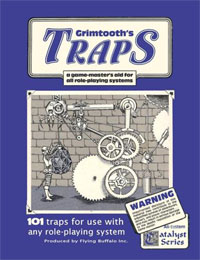Here’s the two-bit tour of the current financial crisis: In an attempt to cure the woes that led to the Great Depression, the banking industry was regulated. These regulations were designed to rein in unchecked greed from running us, lemming-like, off a financial precipice. Over the past thirty years, the Republican philosophy of de-regulation — championed by conservative leaders like Reagan, Bush, and McCain — systematically dismantled these protections. The warning flags were raised with the S&L crisis in the late ’80s (which included significant scandals including George W. Bush’s brother and John McCain himself). But, after the S&L bailout was paid, these warning signs were largely ignored and the Republicans continued on their de-regulating crusade.
Which brings us to today. With a significantly deregulated mortgage market, lenders issued riskier and riskier mortgages in the pursuit of more and more money. And because the banking industry had been deregulated, they were able to package these risky mortgages into unregulated securities… which could be sold to give them more money to make even riskier mortgages. In many ways it resembled a pyramid scheme and eventually, like all pyramid schemes, it collapsed as the risky mortgages started failing.
Today the value of these securities has completely flat-lined. They’re worthless paper because nobody has any confidence in the value of the risky mortgages on which they’re based. But our entire deregulated financial system is so heavily invested in these worthless mortgages as a result of the unregulated securities they were packaged into that the entire system is in danger of eminent collapse.
(Warning: The previous paragraphs contains gross over-simplification of a complex issue.)
So, enter the bailout: The government will buy up these bad mortgages (although no one is sure exactly what they’re worth), which will hopefully save the financial institutions which foolishly invested in them. If you think of the bad mortgages as a thug with his foot on the windpipe of the financial institutions, we’re grabbing the thug and giving the financial institutions a chance to get back on their feet.
But there’s a problem with this analogy: There is no thug and no innocent victim here. The financial institutions we’re trying to help get back on their feet were the ones putting their feet on their own windpipes.
What’s needed here is not a rescue. It’s an intervention.
Here’s a better analogy: Our financial institutions are cutters. They like to hurt themselves. It’s not really their fault. It’s just that, collectively, they’re incapable of controlling their own greed. We need to get them help. And an important part of that help will be putting them in a straitjacket so that they can’t keep hurting themselves.
The name of that straitjacket? Regulation.
And this is my primary objection to the Bush bailout plan: It throws money at a symptom without actually curing the disease. The fact that the symptom itself (the dead weight of these sub-prime mortgage securities) is bad enough that it needs to be addressed doesn’t mean we should be ignoring the disease. And that means that part of this bailout needs to be a re-institution of the post-Depression regulations that were put in place to stop exactly this kind of disaster from happening again.
But there’s also another problem to be addressed here: The bad mortgages.
The bailout is designed to buy up those bad mortgages, wave a magic wand over them, and make them disappear. (This looks like another analogy, but it isn’t. The Treasury Department really has no idea what they’re going to do with these mortgages once they buy them.)
But, again, that’s just a crude attempt at treating the symptom. The problem is that these are bad mortgages. Just transferring ownership to the public isn’t going to change that fact.
So why are these bad mortgages? Because (a) the people who borrowed money under these mortgages are likely to default on their payments and (b) the value of the property itself has been devalued so that foreclosure won’t recoup the lender’s investment.
And why are these people likely to default on their payments? It’s not as if anyone wakes up one day and says, “You know what would be fun? Getting foreclosed and ruining my credit!”
Well, there are two primary reasons:
(1) They have lost the income that allowed them to make the payments on the mortgage. (They may have lost their job or the other costs of living may have risen to a point where they can no longer afford the payments.)
(2) The size of the payment has increased to the point where they can no longer afford the payment. (The result of an adjustable rate mortgage, a balloon payment mortgage, or similar “teaser rate” schemes.)
There’s little that can be done about the former (short of strengthening our economy in general), but the latter is — once again — the direct result of deregulating the mortgage industry. The types of mortgages are predatory in nature, irresponsible for both lender and borrower, and (as we have seen) extremely dangerous for our economy.
It should be obvious to anyone looking at this crisis objectively that these types of loans need to be regulated out of existence. Like usury interest rates, there is no reason for them to exist.
But I would go one step further. We shouldn’t just be getting rid of these loans going forward, we should be figuring out a way of retrofitting the existing loans so that the people currently holding these loans can continue making their monthly payments.
I’m not a mortgage expert, so I don’t know the best way of accomplishing that. But we know that the homeowners with these mortgages were (and probably are) capable of making a reasonable monthly payment. The goal is to find a way to restructure these mortgages to lock in this reasonable monthly payment. And that may be offering a lower interest rate; extending the term of the loan; or any number of other things.
For the loans that we end up purchasing as part of this bailout, this type of retrofitting should be relatively easy to carry out under the auspices of a properly formulated agency. For other loans of this nature out on the market, we can probably offer incentives to encourage/bailout the financial institutions needing to restructure these “assets” on less favorable terms.
REHABILITATION PLAN
So instead of talking about a “bailout”, let’s instead talk about a Rehabilitation Plan based on three pillars:
(1) We will treat the immediate symptom of this crisis by buying up these bad loans, giving our financial institutions some breathing room.
(2) We will re-institute proper regulation of our financial system to insure our economic security in the future.
(3) We will retrofit existing ARMs and similar mortgages to reduce the foreclosure rate. This will benefit homeowners, help to stabilize these rocky segments of our financial markets, and reduce foreclosures (which will also help the real estate market recover and further stabilize the market).



